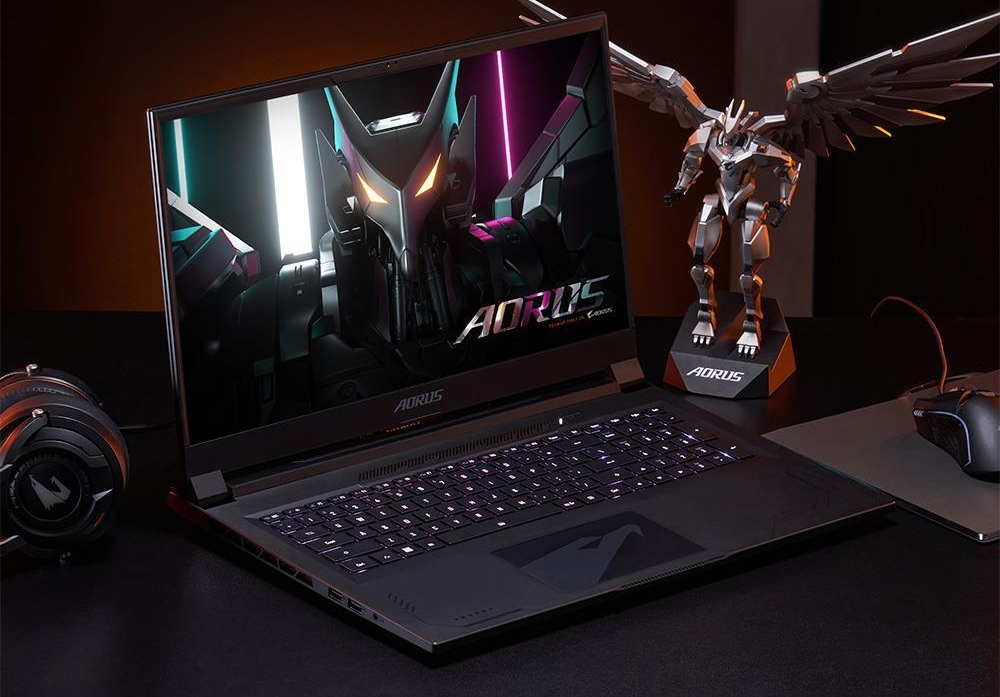
Nvidia Mobile RTX 4070, 4060, 4050 Benchmarks Arrive, Die Sizes Confirmed
The Nvidia Ada Lovelace architecture sports many changes and improvements, and it powers some of the best graphics cards. It’s also now starting to power some of the best gaming laptops, with RTX 4090, 4080, 4070, 4060, and 4050 variants starting to ship. The last three are of particular interest, even if you’re not interested in a gaming laptop, as they also provide hints of what we might get from the lower-tier desktop counterparts.
Computerbase has posted benchmarks (opens in new tab) of the mobile 4070, 4060, and 4050. At the same time, others have taken photos of the AD106 and AD107 chips that power these GPUs, providing confirmation of die sizes. Skyjuice (of Angstronomics (opens in new tab) fame, who provided the first clear details of AMD’s GPU chiplet architecture) tweeted (opens in new tab) that AD106 measures 186mm^2 and AD107 measures 156mm^2, which is slightly smaller and larger, respectively, than previous estimates (opens in new tab).
AD106: 186mm² 36SMAD107: 156mm² 24SMTime Spy Graphics curves vs GA104:4050 stops scaling at 95W4060 stops scaling at 105W4070 stops scaling at 105WPerfcap is vRel/boost clock limited140W max TGP is irrelevantHistorical Time Spy progression by TierVia @hfwwm pic.twitter.com/omSKlQtPRhFebruary 21, 2023
As expected, benchmarks indicate these mobile GPUs are hitting power limits that in turn put a cap on performance. Just as we saw with the RTX 4090 and 4080 mobile parts at 160W, there’s only so much you can do without increasing power consumption. It’s partly why the RTX 4090 desktop cards have a 450W TGP: It won’t always need to use that much power, but when it does, extra juice can provide substantially higher performance than the 320W RTX 4080.
Here’s the quick recap of specs for the various mobile parts (though some elements, like transistor count, remain unconfirmed).
| GPU | RTX 4090 Laptop | RTX 4080 Laptop | RTX 4070 Laptop | RTX 4060 Laptop | RTX 4050 Laptop |
|---|---|---|---|---|---|
| Architecture | AD103 | AD104 | AD106 | AD107 | AD107 |
| Process Technology | TSMC 4N | TSMC 4N | TSMC 4N | TSMC 4N | TSMC 4N |
| Transistors (Billion) | 45.9 | 35.8 | ? | ? | ? |
| Die size (mm^2) | 378.6 | 294.5 | 186 | 156 | 156 |
| Streaming Multiprocessors | 76 | 58 | 36 | 24 | 20 |
| GPU Cores (Shaders) | 9728 | 7424 | 4608 | 3072 | 2560 |
| Boost Clock (MHz) | 1455–2040 | 1350–2280 | 1230–2175 | 1470–2370 | 1605–2370 |
| Tensor Cores | 304 | 232 | 144 | 96 | 80 |
| Ray Tracing Cores | 76 | 58 | 36 | 24 | 20 |
| TMUs | 304 | 232 | 144 | 96 | 80 |
| ROPs | 112 | 80 | 48 | 32 | 32 |
| L2 Cache (MB) | 64 | 48 | 32 | 32 | 12 |
| Memory Interface (bit) | 256 | 192 | 128 | 128 | 96 |
| Memory Speed (GT/s) | 18–20 | 18–20 | 16 | 16 | 16 |
| TGP (Watts) | 80–150 | 60–150 | 35–115 | 35–115 | 35–115 |
All of the mobile chips have a fairly wide range of power options, which will depend on the specific laptop configuration and implementation. The 4090 and 4080 can also exceed the 150W TGP in some cases, by up to 25W, with “max Dynamic Boost 2.0.” Maximum clocks will also vary based on power limits and workload, with most of the chips likely clocking several hundred MHz lower than their desktop counterparts in typical gaming workloads.
Computerbase tested performance using Clevo (XMG) and Gigabyte laptops for the RTX 4070, 4060, and 4050 mobile variants. The XMG model used a maximal configuration with up to 140W of power, while the Gigabyte Aero 14 OLED limits the RTX 4050 to just 45W maximum power (10W via Dynamic Boost).
Overall, the RTX 4070 laptop averaged 44 fps at 2560×1440 across a test suite of seven games, while the RTX 4060 dropped to 37 fps. With ray tracing enabled, performance dropped to 34 fps on the 4070 and 30 fps on the 4060. The RTX 4050 wasn’t tested at 1440p due to having just 6GB of VRAM, which would have caused very poor performance (with or without ray tracing).
At 1080p, things are much better, with the RTX 4070 averaging 76 fps, the 4060 at 65 fps, and the RTX 4050 (in a lower power envelop) delivering 38 fps. With ray tracing, those scores drop to 59 fps on the 4070 and 51 fps on the 4060, and the 4050 wasn’t tested with ray tracing enabled.
That’s without DLSS 2/3 (if supported), so it’s possible to improve performance while still targeting a higher resolution. Computerbase shows DLSS scaling, with and without Frame Generation, using Spider-Man Remastered at 1440p. DLSS Performance mode with Frame Generation nearly doubled the performance on both the 4070 and 4060, as expected.

Overall, the lower tier RTX 40-series mobile GPUs look decent, though what you’ll actually get will depend on other components like the CPU and display, as well as the specific configuration of the GPU. It’s also an interesting change of pace for Nvidia, launching the 4070, 4060, and 4050 first on laptops while we still await the respective desktop implementations. No doubt that’s at least due in part to the higher margins available in the laptop sector.
Current rumors indicate we’ll likely see the desktop RTX 4070 in April, but we’re not certain when the 4060 and 4050 will arrive. Launching at Computex in June is possible, but a lot may depend on how fast inventory of existing parts gets cleared out and how much demand Nvidia sees.

